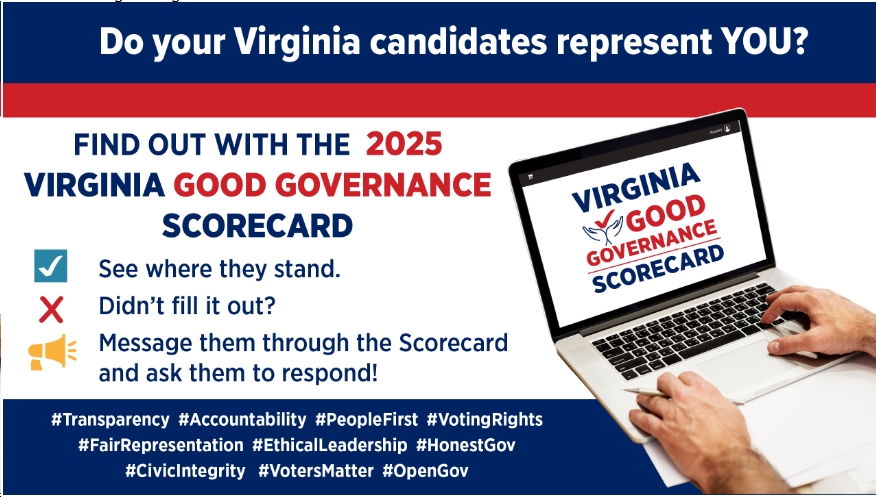Adam Siegel, who writes at his own blog (Get Energy Smart Now) and here at Blue Virginia, has been an expert on energy issues for many years, working for a wide range of firms (from pre-revenue start-ups to Fortune 50), non-profits and government agencies with much of this strategic planning and forecasting related. So he certainly has a basis for engaging in this subject. He’s also a strong proponent of transitioning as rapidly as possible from fossil fuels to a clean energy economy, within the bounds of what makes sense economically, considering the urgent nature of the climate crisis, and also keeping in mind the enormous economic opportunities available for those who move aggressively and intelligently into the clean energy space.
For all those reasons, when Adam talks about energy issues, it’s worthwhile to consider what he has to say. The latest case in point: the Virginia Clean Economy Act (VCEA), which was introduced a week ago by a coalition of Virginia environmental groups, and the general question of how Virginia should proceed in moving towards clean energy. The big question is whether VCEA is ambitious enough, or whether it is unduly pessimistic and/or not sufficiently aggressive about what Virginia can actually achieve. So far, based on Adam’s number crunching, it appears that…unfortunately, the latter is the case – and not by a small amount, either, but by a big margin. Here are some key points from Adam’s “back-of-the-envelope” calculations about what Virginia can actually achieve vs. what the VCEA is calling for:
- VCEA targets 60% non-carbon-emitting electricity (including nuclear power) by 2036 and 100% by 2050. Note that nuclear power currently accounts for about a third of Virginia’s overall power generation, which is about half of the 2036 VCEA target of 60%. As I pointed out here, “This means that by 2036, only around one-third of Virginia’s power production will be made up of true renewables, like solar and wind power.”
- So, basically, holding nuclear roughly flat, is it ambitious enough to pass legislation requiring that about one-third of Virginia’s electricity will be made up of renewable energy sources like solar and wind power (NOT counting traditional biomass, which is…let’s just say, problematic) by 2036, sixteen years from now, up from about 1% now?
- The short answer to that question, by actually looking at the numbers, is clearly NO, it’s not even close to ambitious enough. Thus, Siegel has found: “just a few scratches on the back of the envelope and Virginia is ballpark 70 percent carbon-free electricity by 2030 (even while moving fast to ‘electrify everything) with a clear roadmap for 100 percent carbon-free electrons by the mid-2030s.” That’s right: Virginia could easily achieve 70% carbon-free electricity within 10 years, and 100% by 2035 or so, compared to just 60% carbon-free electricity by 2036 in the VCEA. That’s a huge difference.
- How would Virginia get to 70% carbon-free electricity by 2030? According to Adam Siegel’s calculations:
- Virginia could crank up offshore wind power development to reach 6 gigawatts (GW) by 2030 (“more than 25% of Virginia’s total electricity demand”) and 11 GW by 2035 (“more than 40%” of Virginia’s total electricity demand);
- Develop the Commonwealth’s more-limited onshore wind resources, getting to perhaps 500 megawatts by 2030 (around 2%-3% of Virginia’s total electricity demand);
- 3) crank up utility-scale solar power to 5 GW by 2030 and distributed solar (e.g., rooftop) to 2.5 GW by 2030, getting overall solar power to around 10%-15% of Virginia’s total electricity demand.
- Add those up and you get: 25% offshore wind + 2%-3% onshore wind + 10%-15% solar + 30% nuclear = 67%-73% clean power. Note that this is already 5-13 percentage points higher than 60%, and six years earlier as well, than what’s called for in the VCEA. And that’s not even including hydro (of which Virginia doesn’t have much potential) or biomass (which is highly problematic in its own ways, of course) or landfill methane or geothermal or whatever.
Bottom line: Virginia can do much, much better than what’s being called for in the VCEA. In fact, one could argue that if we simply do what’s already planned in “business-as-usual,” plus continue building offshore wind and utility-scale solar, plus crank up distributed solar as well, Virginia could far surpass 60% by 2036, and in fact get to 100% clean electricity by that point. So why wouldn’t we do this? What, if anything, are we missing here? Is the lack of ambition all about Dominion Energy holding us back, yet again, or is something else going on here?
P.S. Note that Adam’s assuming more electrification (e.g., of transportation), but also major strides on energy efficiency.

 Sign up for the Blue Virginia breaking news newsletter
Sign up for the Blue Virginia breaking news newsletter







![[UPDATE: Walkinshaw Wins with Nearly 60% of the Vote] VA11 Dems Firehouse Primary Results Thread; Votes Being Counted, but Stella Pekarsky Campaign Already Has Congratulated James Walkinshaw “for his victory tonight”](https://bluevirginia.us/wp-content/uploads/2025/06/va11demsmontage-100x75.jpg)

